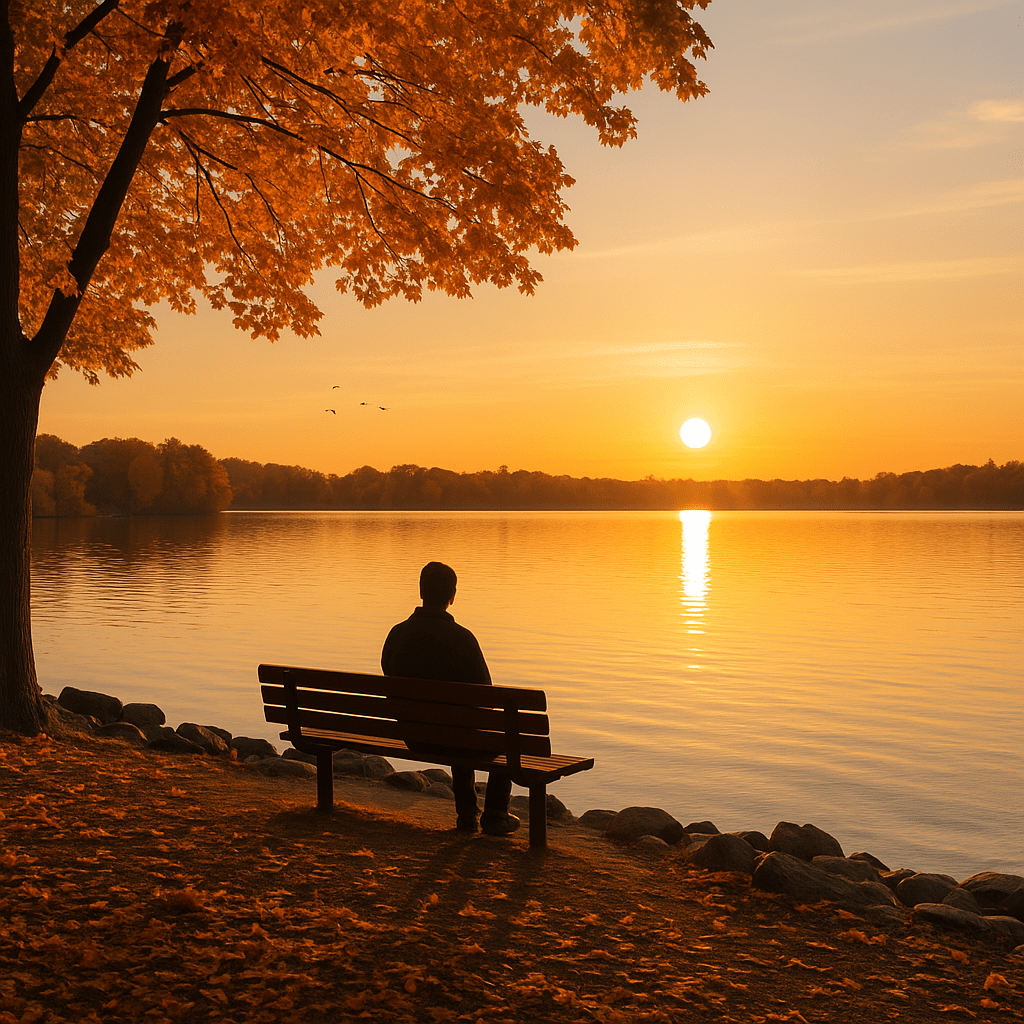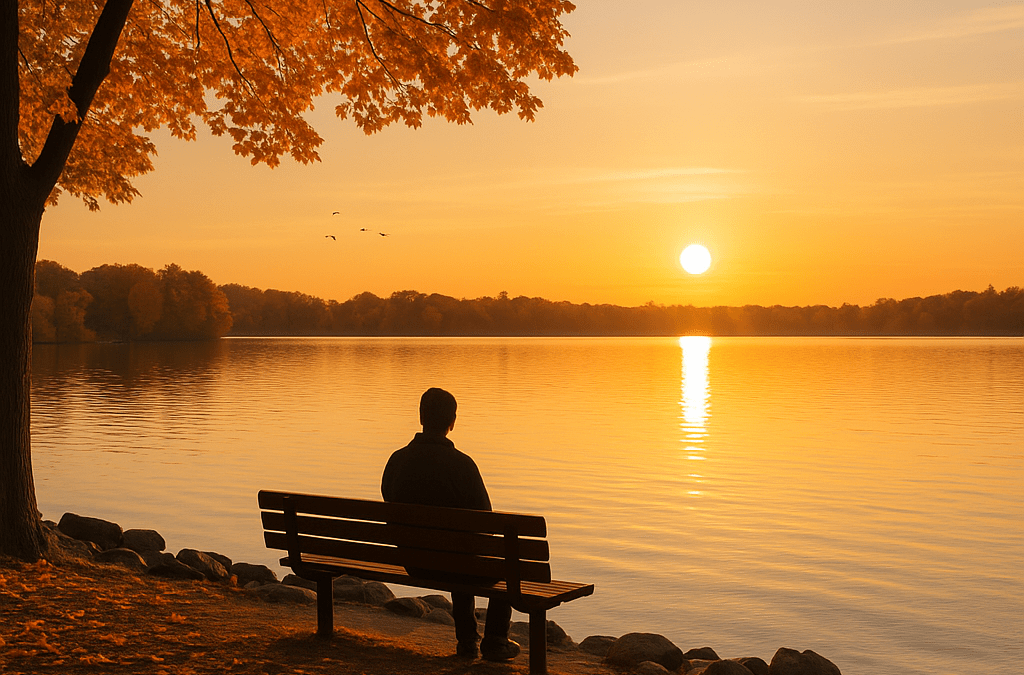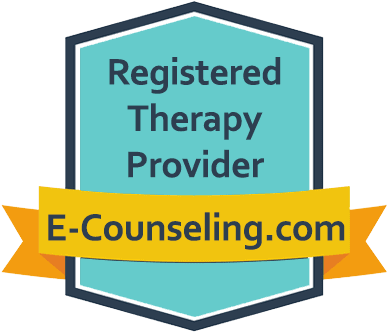
What is Eco-Anxiety and Why is it Growing?
Eco-anxiety refers to the chronic fear of environmental doom. It can manifest as worry, helplessness, guilt, or even physical symptoms like headaches or sleep disruptions. While not a clinical diagnosis, it’s a growing concern, especially among young adults. According to a 2021 Lancet study, 59% of people ages 16 to 25 reported being very or extremely worried about climate change.
In Minnesota, extreme weather events, changing lake levels, and longer allergy seasons are visible reminders of our shifting climate. News of wildfires, droughts, and rising temperatures elsewhere only adds to the pressure. When uncertainty feels overwhelming, it can impact our emotional balance, productivity, and ability to feel hopeful about the future.
The Minnesota Connection: Nature as Healer
Minnesotans are uniquely positioned to tap into nature for healing. With over 10,000 lakes, four distinct seasons, and widespread access to state parks and trails, the environment offers powerful mental health support.
Nature therapy, or ecotherapy, involves intentional time outdoors to boost well-being. Activities like walking around Lake Minnetonka, hiking in Itasca State Park, or even birdwatching in Bloomington parks can lower cortisol levels and increase serotonin.
HealthPartners and the University of Minnesota both endorse the role of outdoor exposure in treating anxiety and depression. In 2024, a Twin Cities pilot program even prescribed nature walks in place of medication for mild anxiety.
How Nature Therapy Works on the Brain
Spending time in green spaces activates the parasympathetic nervous system, which helps the body relax. Studies show:
- Just 20 minutes outdoors can reduce stress hormones by up to 30%.
- Natural light regulates melatonin, improving sleep.
- Walking in nature improves executive function and memory.
Using national data as Minnesota specific research unavailable, the American Psychological Association reports a 37% reduction in symptoms of depression among participants in structured outdoor programs.
Practical Outdoor Wellness Strategies in Minnesota
Looking to integrate more nature into your mental health routine? Try these accessible ideas:
- Lakeside Mindfulness: Sit by Lake Harriet or Lake Nokomis and spend 5 minutes focusing on the sounds of water.
- Autumn Leaf Walks: Visit Duluth or Rochester during peak fall color and consciously observe the changes in the trees.
- Winter Forest Bathing: Bundle up and walk in silence through Elm Creek Park Reserve, letting your senses absorb the crisp air and snow textures.
- Springtime Gardening: Even small backyard or balcony pots in St. Paul can bring therapeutic value.
- Birdwatching: In Bloomington, Minnesota Valley National Wildlife Refuge offers quiet trails and rich bird diversity.
How to Talk to Clients About Eco-Anxiety
If you’re a clinician, it can be tricky to validate climate concerns while keeping the tone hopeful. Here’s a framework:
- Normalize the feeling. Climate distress is a rational response to real threats.
- Ground the conversation in the present. What can they control now?
- Introduce action-based coping. Volunteer for local cleanups or support policy initiatives.
- Use local success stories. Point to Minnesota companies like 3M and Target implementing sustainability programs.
Reinforce that they are not alone, and healing is possible without having to solve the entire crisis.
Is Nature Therapy Enough?
Nature therapy is a supportive practice, not a cure-all. For clients with clinical anxiety, depression, or trauma, combining outdoor activities with talk therapy or medication may offer the best outcomes.
According to the Mayo Clinic, individuals who included 90 minutes of outdoor time weekly in their treatment reported higher satisfaction with therapy results. Nature simply amplifies the benefits of what’s already working.
Cost, Access, and Long-Term Benefits
Unlike many interventions, outdoor wellness is free and accessible. A short drive from Minneapolis can lead to dozens of trailheads, state parks, or urban green spaces. Unlike gym memberships or apps, nature has no subscription fee.
The long-term benefits include:
- Reduced reliance on medication for mild anxiety
- Improved sleep and circadian rhythms
- Increased community engagement through outdoor events
With the mental health industry shifting toward holistic care, investing time in nature offers both emotional and financial return.
FAQ
1. Is eco-anxiety a recognized diagnosis?
No, but it’s a validated emotional experience acknowledged by clinicians and researchers.
2. Can kids experience eco-anxiety?
Yes. Many children express fears about the planet, especially when exposed to extreme weather news.
3. What’s the best time of year for nature therapy in Minnesota?
All seasons offer benefits: summer lake days, fall foliage, winter snow walks, and spring renewal.
4. Do I need a therapist to practice nature therapy?
No. While helpful, many techniques are self-guided and accessible to anyone.
5. Is this the same as forest bathing?
Forest bathing is one form of nature therapy, emphasizing sensory engagement in wooded areas.
6. Can nature therapy replace my medication?
Always consult your provider. Nature can complement, but not replace, prescribed treatments.
7. Where can I find guided nature therapy in Minnesota?
Try Minneapolis Parks and Recreation or partner programs through the University of Minnesota Extension.
Conclusion: Finding Ground in Nature
Eco-anxiety doesn’t have to control your life. Nature offers a reliable, welcoming space to reconnect, reflect, and recover. Whether it’s watching loons on Lake Minnetonka or walking the Mississippi River Trail, the outdoors remains one of Minnesota’s most underused mental health tools.
Get Support:
Find a local Therapist: https://mindfullyhealing.com/clinicians
(952) 491-9450
Sources:
- Climate Anxiety in Young People (Lancet, 2021): https://doi.org/10.1016/S2542-5196(21)00278-3
- The Mental Health Benefits of Nature Exposure (APA, 2020): https://www.apa.org/monitor/2020/04/nurtured-nature
- Forest Bathing and Depression (Mayo Clinic, 2024): https://www.mayoclinic.org/healthy-lifestyle/stress-management/in-depth/forest-bathing/art-20495750




